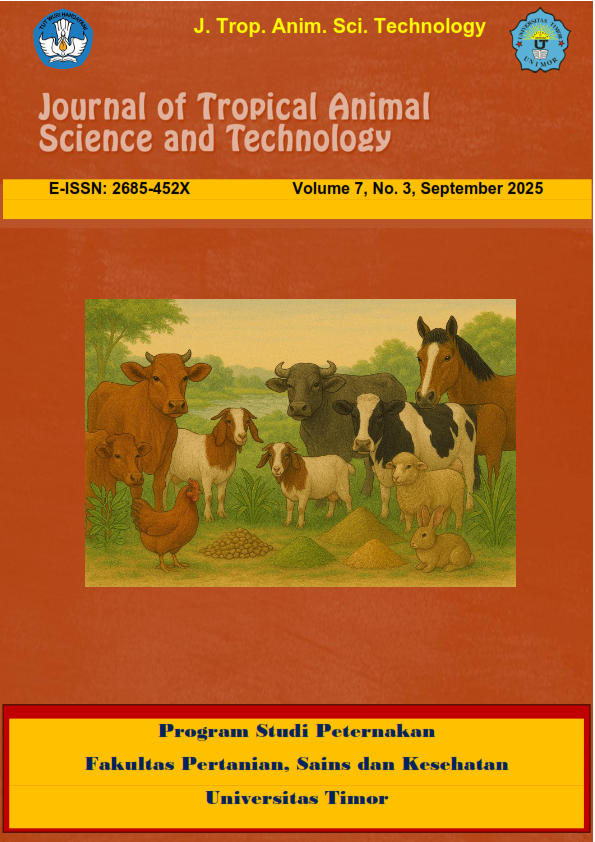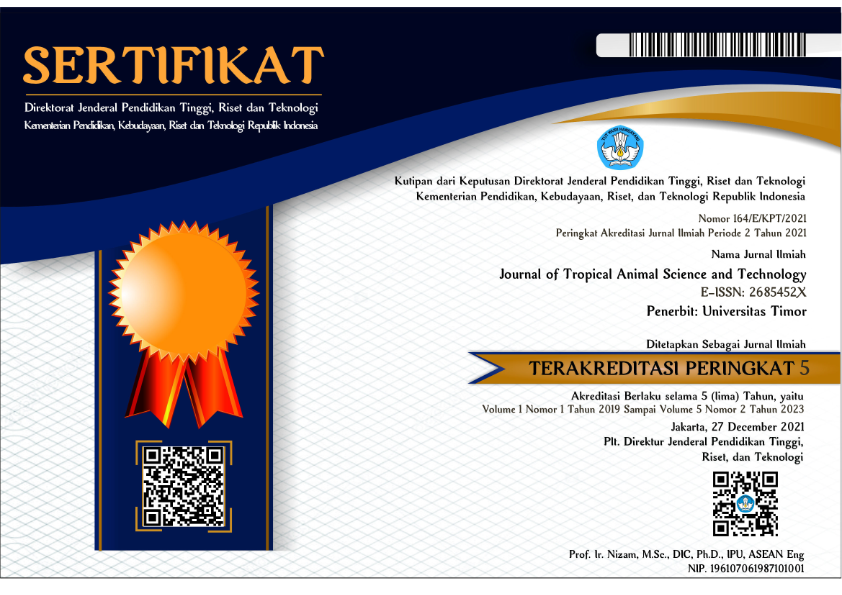Effect of Different Levels of Fish Meal in the Diet on Energy Intake of Young Male Kacang Goats Fed a Complete Silage-Based Diet
Keywords:
Fish meal level; Energy consumption; Faecal energy and urinary energy; Kacang Goat; Complete silage.Abstract
This study aimed to determine the effect of different levels of fish meal on the energy consumption of young male Kacang goats fed a complete silage diet. The study was conducted over three months in Kefamenanu Selatan Village, North Central Timor Regency (TTU), using nine 6–8-month-old Kacang goats with an initial weight of 11–14 kg. The goats were divided into three treatment groups, namely T1: 45% complete silage + 25% ground corn + 15% bran pollard + 10% rice bran + 5% fish meal; treatment T2: 45% complete silage + 25% ground corn + 10% pollard bran + 10% rice bran + 10% fish meal; treatment T3: 45% complete silage + 25% ground corn + 10% pollard bran + 5% rice bran + 15% fish meal. The variables observed included gross energy (GE), digestible energy (DE), faecal energy, urinary energy, metanae energy and metabolisable energy (ME). The results showed that gross energy (GE), digestible energy (DE), faecal energy, urinary energy, metanae energy and metabolisable energy (ME) of male Kacang goats fed different levels of fish meal did not differ significantly between treatments. It can be concluded that feeding 5%, 10%, and 15% fish meal levels to young male Kacang goats that received complete silage as their basic feed had no significant effect on gross energy consumption, digestible energy, faecal energy, urinary energy, or metabolic energy.
Downloads
Downloads
Published
How to Cite
Issue
Section
License
Copyright (c) 2025 Journal of Tropical Animal Science and Technology

This work is licensed under a Creative Commons Attribution-NonCommercial-ShareAlike 4.0 International License.






















